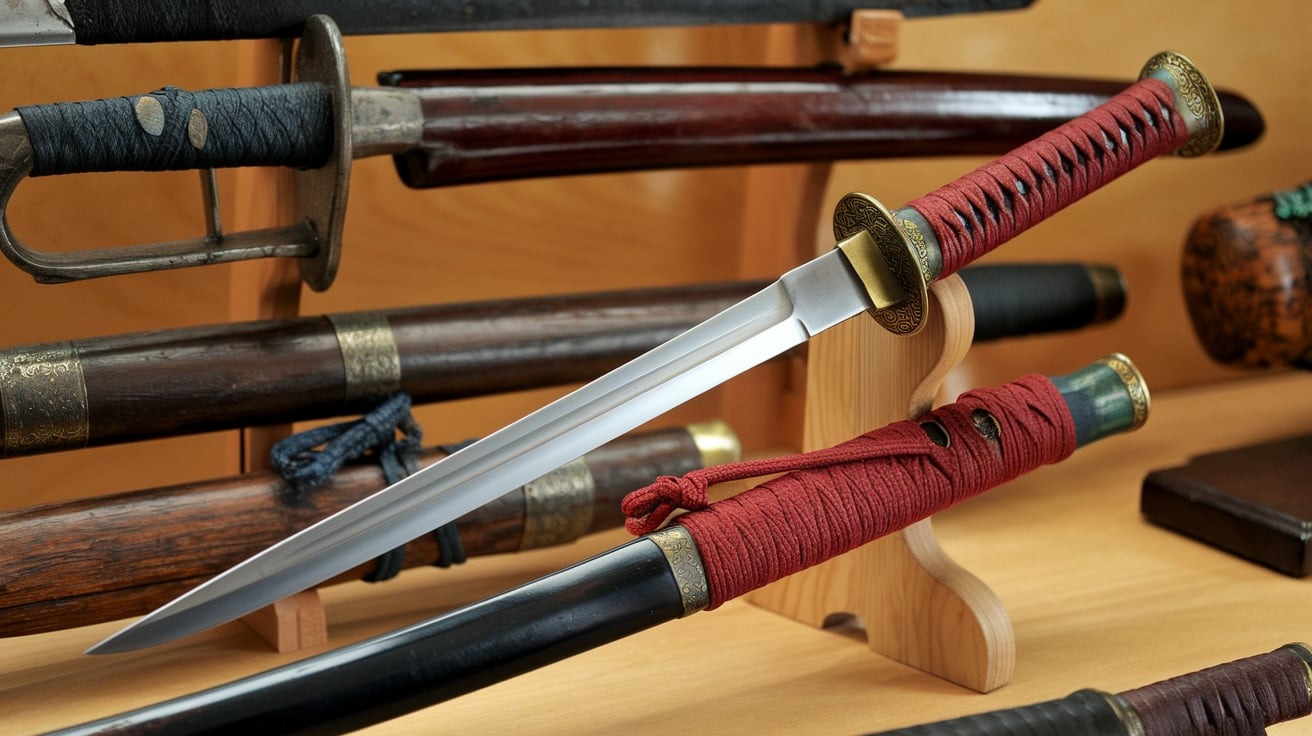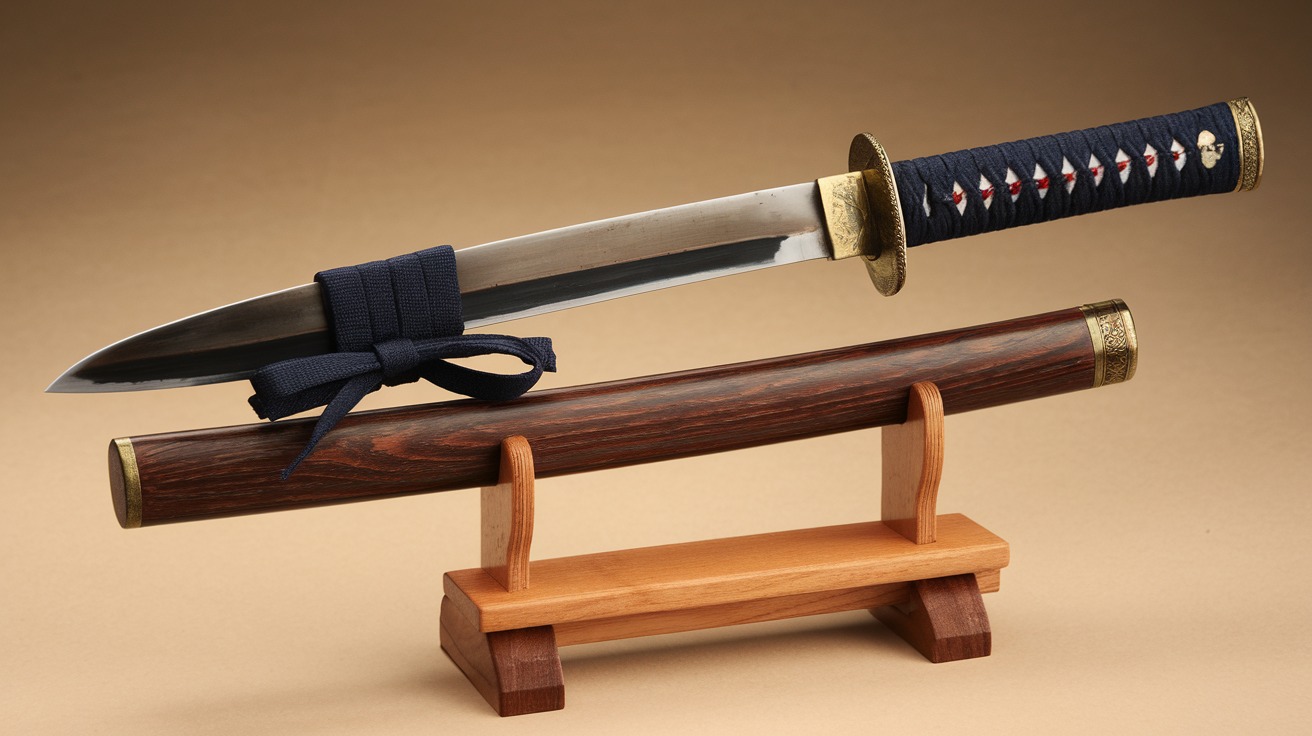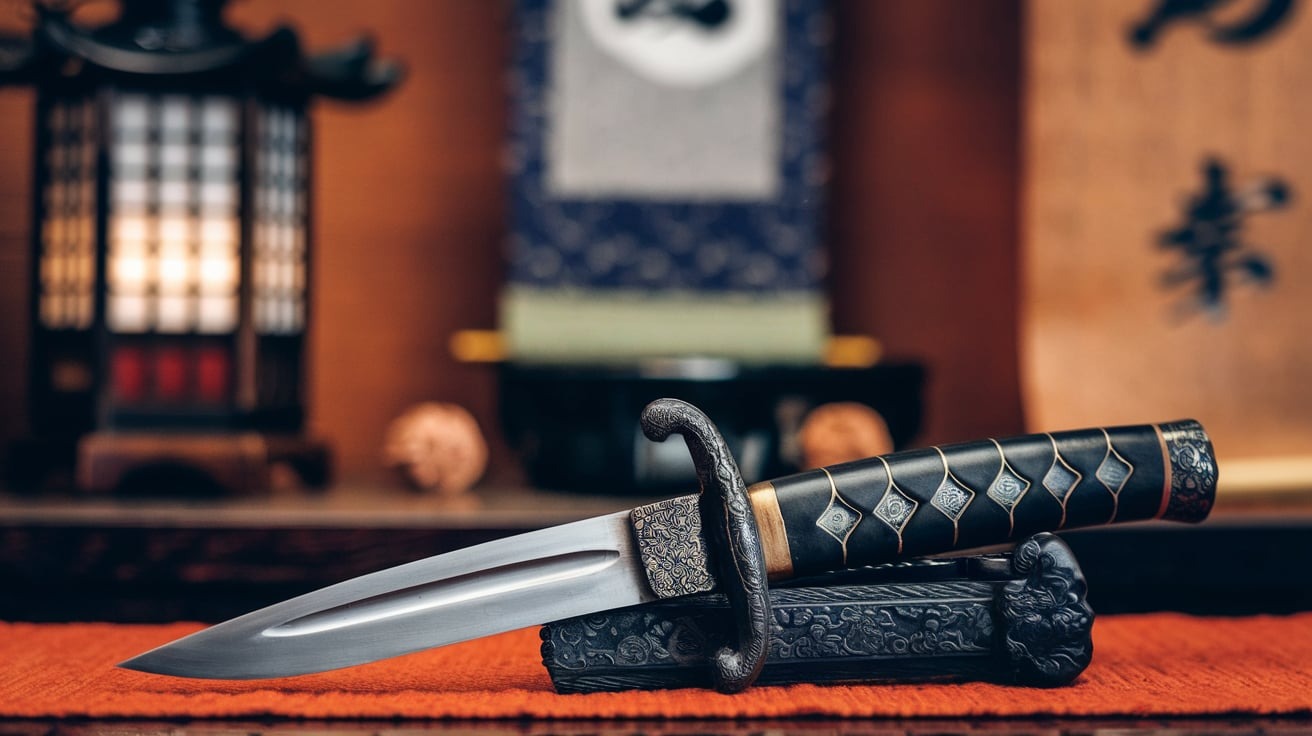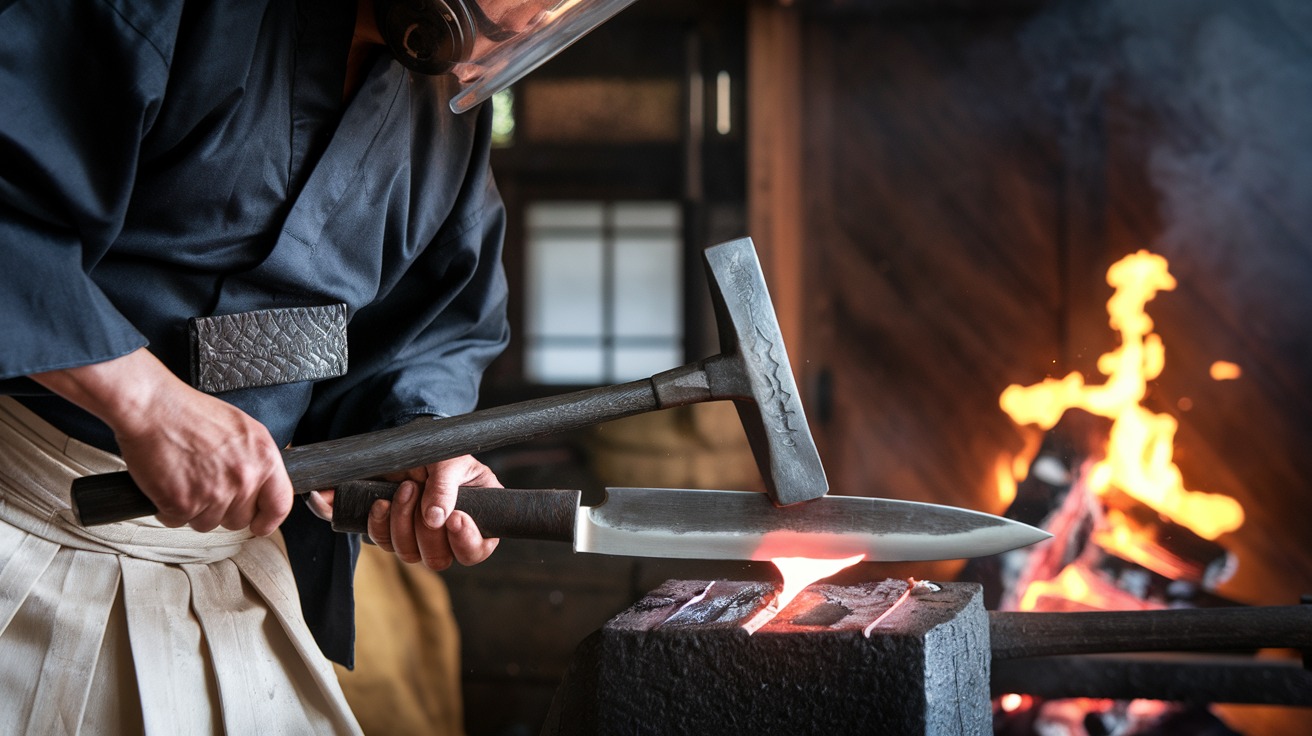Blog
Understanding Japanese Daggers: Types, Fittings, and Blades

Japanese daggers, known for their intricate craftsmanship and cultural significance, are more than mere weapons—they are works of art. From their blade designs to their decorative fittings, these daggers offer a glimpse into the rich heritage of Japanese craftsmanship. Let’s delve into the variations of Japanese daggers, their unique features, and their symbolic value.
What Is the Japanese Word for Dagger?
The language of the country is Japanese and the meaning of dagger is tantō (短刀). Tantō is the second weapon with which the Japanese samurai and it is made with the same thoroughness as bigger blades like the katana. This sort of dagger was largely used in close combat although it had other functions and connotations representing status and authority.
Key Features of Japanese Daggers

The Japanese daggers are usually short-bladed weapons and are commonly less than 12 inches in length. These performance daggers are in many forms and styles, as the creativity of Japanese sword makers showcases these blades.
Blade Design: In a Japanese dagger, the blade is frequently a single edge so that the end can be sharp to penetrate a body. However, it is not a constant with knives for double-edged creations with better creativity.
Fittings: Parts of a Japanese dagger called koshi races are made with much precision. These complementaries include the handle (tsuka), guard (tsuba) as well as a sheath (saya) are frequently inlaid with designs and fabrics such as silk, lacquer, and gold.
Variations of Japanese Daggers
Traditional Tantō: The most common type of Japanese dagger, known for its simplicity and functionality.
- Aikuchi: A dagger without a guard (tsuba), offering a minimalist design that emphasizes the beauty of the blade and handle.
- Hamidashi: A variation with a small, understated guard, blending elegance with practicality.
Each variation of the Japanese dagger reflects different historical and cultural influences, making them unique pieces of art.
The Symbolism of Japanese Daggers
Japanese daggers often symbolize honor, loyalty, and courage. Historically, they were used in ritualistic contexts, such as the practice of “seppuku,” or ritual suicide, to restore honor. Today, Japanese daggers continue to hold symbolic meaning and are admired as collectibles or even as tattoo inspirations.
Japanese Dagger Tattoos: A Blend of Tradition and Modernity
The Japanese dagger tattoo is a popular choice among tattoo enthusiasts who appreciate the cultural and artistic significance of these weapons. These tattoos often incorporate traditional motifs such as cherry blossoms, dragons, or waves, enhancing the dagger’s visual appeal.
The dagger’s sleek design and rich symbolism make it a perfect centerpiece for body art, representing themes of resilience, protection, and strength.
The Art of Crafting a Japanese Dagger
Crafting a Japanese dagger requires exceptional skill and dedication. Swordsmiths follow ancient techniques, combining traditional methods with modern innovations. The process includes:
- Forging: Heating and hammering the steel to achieve the desired shape and strength.
- Polishing: Refining the blade’s surface to enhance its sharpness and beauty.
- Decorating: Adding intricate details to the fittings, making each dagger a unique masterpiece.
Conclusion
Japanese daggers as regards their functional outlook and exquisite ornaments are symbols of Japan’s tradition. Whether you like the look of a tantō – a traditional Japanese knife – the smooth lines of a Kikuchi – a tantō that has the blade attached to the handle – or even the representational call of the Japanese dagger tattoo, these weapons tend to be historically interesting and aesthetically appealing. Knowledge of differences in blades and fittings helps to start analyzing the essence of Japanese knives as not only a weapon but also as a symbol of honor and unique art.

